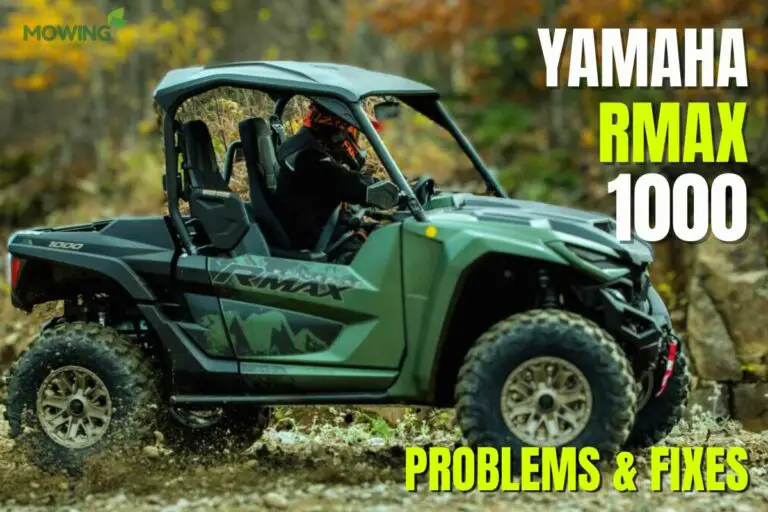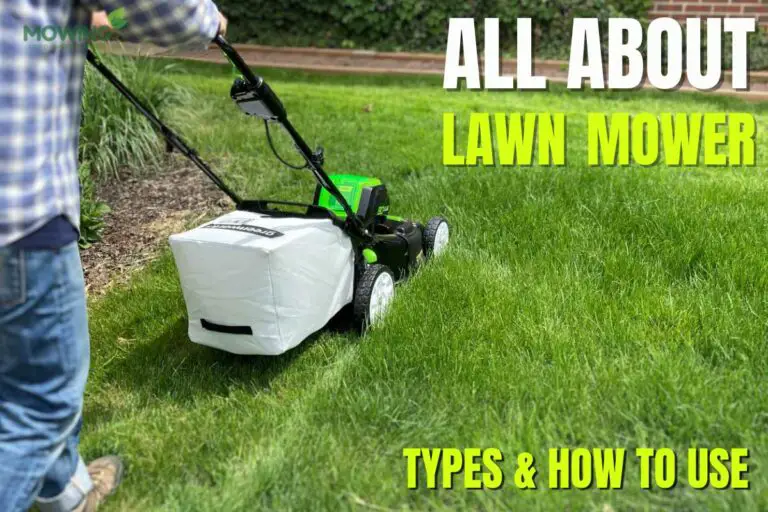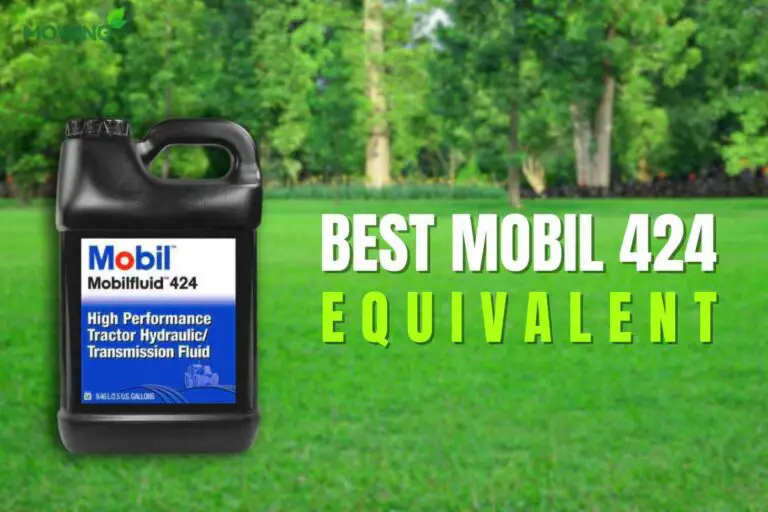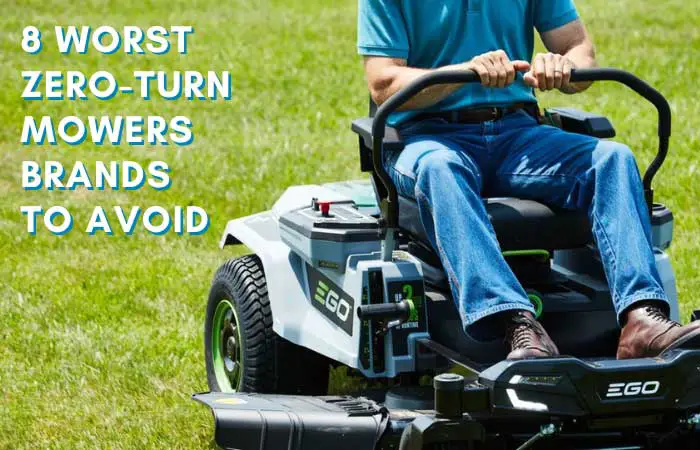
The John Deere 6400 is a popular tractor, but it has problems. Common problems include faulty water pumps, problematic shuttle shifts, fuel system issues, transmission problems, problematic steering, hydraulic pump damage, PTO issues, clogged radiator films, and a difficult start.
If you are experiencing any of these problems, here are some tips for preventing problems with your John Deere 6400. These tips can help keep your John Deere 6400 running smoothly for many years.
Are you experiencing problems with your John Deere 5075E tractor? Read our comprehensive guide to learn John Deere 5075E problems and how to fix them.
Common John Deere 6400 Problems and Effective Fixes
John Deere 6400 problems can be caused by various factors, including poor maintenance, overloading the tractor, and using the wrong attachments. Here I listed the most common Problems and Effective Fixes for John Deere 6400:
Problem 1: Engine Problem
Engine issues are one of the most common problems John Deere 6400 owners reported. These issues can range from simple and easy to fix, such as a dirty air filter, to more serious and costly problems, such as a blown head gasket.
Here are some of the most common engine problems experienced by John Deere 6400 owners:
- Dirty air filter
- Low oil level
- Blown head gasket
- Engine misfires
How to Fix it:
If you are experiencing engine problems with your John Deere 6400, the first step is to inspect the engine thoroughly. Here are some of the things you can check:
Problem 2: Overheating
Overheating is a common problem with John Deere 6400 tractors. The most obvious signs of overheating are a red temperature gauge and an audible warning buzzer. If you notice either of these signs, it is important to prevent further damage to your tractor immediately.
Several things can cause overheating, including:
How to Fix it:
If you suspect your tractor is overheating, it is important to stop operating it immediately and allow it to cool down. Once the tractor has cooled down, you can check the coolant levels and look for any obvious signs of damage to the radiator or water pump.
Here are some tips to help prevent overheating:
Problem 3: Transmission Problems
John Deere 6400 tractors are prone to transmission problems, with overuse being the primary cause. Regular heavy lifting and excessive vibrations can lead to accelerated wear and tear. A Deere 6400 with transmission problems will not move or reverse properly.
How to Fix it:
To fix the transmission system, first shut it down to easily access the pack. Rebuilding the transmission will immediately solve the problem. However, if you encounter any difficulties, consult a mechanic. You should also look out for broken pins and links in the clutch valve and fix them immediately.
Here are some tips to help prevent transmission problems in your John Deere 6400:
Problem 4: Electrical Problem
Electrical problems are another common issue with the John Deere 6400. These problems can range from simple things like a loose wire to more serious problems like a faulty electrical component.
Here are some causes for electrical problems in John Deere 6400 tractors:
How to Fix it:
Electrical problems can be resolved with simple repairs or maintenance. For example, using a wrench and screwdriver, you can tighten loose wires yourself.
If tightening the wires does not resolve the problem, you must check the electrical components individually to identify the faulty component. Once you have identified the faulty component, you can replace it or take your tractor to a professional.
Here are some tips to help prevent electrical problems in your John Deere 6400:
Problem 5: Fuel System Complications
Many John Deere 6400 owners complain of fuel system problems. Dirt and debris can easily collect in the fuel tank, which can cause clogging in the fuel injectors and lines. This can lead to several problems, including:
How to Fix it:
Dirt and debris can build up in your fuel tank over time, which can cause problems with your engine. To prevent this, you should regularly clean your fuel tank.
To clean your fuel tank, follow these steps:
By following these steps, you can help to keep your fuel tank clean and prevent problems with your engine.
Problem 6: Water Pump Failure
Water pump failure is another common problem in John Deere tractors. There are a few reasons why this might happen, including:
Symptoms of a Failing Water Pump:
The most common symptom of a failing water pump is overheating. If the engine overheats, it can cause damage to the engine and other components. Other symptoms of a failing water pump include:
How to Fix Failing Water Pump:
The only way to fix a failing water pump is to replace it. If you suspect your water pump is failing, it is important to replace it as soon as possible. Replacing a water pump is a relatively easy and inexpensive repair.
Preventing Water Pump Failure:
There are a few things you can do to help prevent water pump failure, including:
Is your John Deere 1025r not working like it used to? Read our comprehensive guide to learn John Deere 1025R Problems and how to fix them.
Problem 7: Shuttle Shift Problem
Shuttle shift problems can make operating a John Deere 6400 tractor difficult and tiresome. Shuttle shift problems occur when the transmission gears shift improperly, making it challenging for the operator to change gears.
The leading cause of shuttle shift problems is a faulty clutch system. An improperly placed linkage between the transmission and shifter can also cause this issue.
How to Fix it:
If you are experiencing shuttle shift problems with your John Deere 6400 tractor, the first step is to adjust the linkage. To do this, follow these steps:
- Locate the linkage adjustment bolts.
- Loosen the linkage adjustment bolts.
- Adjust the linkage until the shuttle shift operates smoothly.
- Tighten the linkage adjustment bolts.
If adjusting the linkage does not fix the problem, the next step is to check the clutch. To do this, follow these steps:
- Remove the transmission’s front cover.
- Inspect the clutch.
- If the clutch is faulty, replace it.
- Reinstall the transmission’s front cover.
If the clutch is fixed, the problem may be caused by crooked links. To fix this, follow these steps:
- Locate the crooked links.
- Replace the crooked links.
Following these steps, you can fix a faulty shuttle shift linkage in your John Deere 6400 tractor.
Problem 8: PTO Issues
New John Deere 6400 owners have reported several PTO problems. While slippage is not a major issue, stripping splines requires immediate attention. Both of these problems are electrical and can be easily fixed.
Slippage: Slippage occurs when the PTO shaft does not turn smoothly. This can be caused by several factors, including:
Stripping Splines: Stripping splines occur when the PTO shaft splines become damaged. This can be caused by several factors, including:
How to Fix it:
Suppose you are experiencing PTO problems with your John Deere 6400 tractor. In that case, you can fix the problem by directly eliminating the electrical circuit section and connecting the differential lock solenoid with the PTO solenoid.
To do this, follow these steps:
- Disconnect the battery.
- Locate the differential lock solenoid and the PTO solenoid.
- Disconnect the electrical connectors from the solenoids.
- Connect the solenoids with a jumper wire.
- Reconnect the battery.
- Depress the differential lock button until the PTO engages.
- Disengage the brakes.
If the PTO engages and operates properly, then the problem was caused by a faulty electrical circuit. If the PTO does not engage or operate properly, then the problem may be caused by a mechanical failure. In this case, you will need to have the tractor serviced by a qualified mechanic.
Here are some additional tips for fixing PTO problems:
Problem 9: Gears Not Working
Many John Deere 6400 tractor owners have reported gear failure. When a gear fails, you will first notice strange noises coming from the front axle. This is because the gear is not meshing properly with the other gears in the system, causing it to make a lot of noise.
There are a few reasons why a gear might fail in a John Deere 6400 tractor. One possibility is that the gear is worn out and must be replaced. Another possibility is that the gear was not properly lubricated, which can cause it to overheat and fail. Finally, it is also possible that the gear was damaged due to a collision or other impact.
How to Fix it:
If a gear in your John Deere 6400 tractor fails, replacing the old gear with a new one is the best way to fix the problem. You can find replacement gear at most farm supply stores or online.
To replace a gear, follow these steps:
- Disconnect the battery.
- Remove the old gear.
- Install the new gear.
- Reconnect the battery.
- Make sure that the gear is meshed correctly before putting everything back together.
Problem 10: Steering Problems
John Deere 6400 tractors are known for their reliability and durability. However, even the best tractors can experience steering problems. Some of the most common steering problems in John Deere 6400 tractors include:
How to Fix it:
Here are some tips on how to fix John Deere 6400 steering problems:
Problem 11: Lots Of Oil Consumption
Some tractor owners have raised concerns about using more oil than usual, even compared to other tractor brands.
There are a few potential reasons for this:
- Worn or damaged piston rings: When piston rings are worn or damaged, they may allow oil to leak into the combustion chamber, resulting in higher oil consumption. It’s important to inspect the piston rings and replace them if needed.
- Worn valve stems and guides: If the valve stems and guides are worn, they can also permit oil to enter the combustion chamber, leading to increased oil consumption. In such cases, it may be necessary to replace the valves.
- Damaged or seized piston: A damaged or seized piston can also contribute to higher oil consumption. It’s recommended to inspect the pistons and cylinder liners and replace them if necessary.
If you have checked and addressed these possible causes but are still experiencing excessive oil consumption, we advise you to contact your nearest John Deere dealer for further assistance. They will be able to provide additional support and guidance.
Problem 12: Difficult Starting
One of the most common issues experienced with the John Deere 6400 tractor is difficulty in starting. This problem can arise due to several factors, including insufficient fuel, faulty batteries, clogged injection pumps, lack of coolant, and dirty radiator fins.
How to Fix it:
Given that difficult starting can stem from different causes, it is important to determine the specific reason before attempting any repairs. Fortunately, any dirt-related problems can be resolved easily by cleaning the affected parts. It is recommended to replace any damaged components before using the tractor again to ensure smooth operation.
Problem 13: Hydraulic Issues
Many John Deere 6400 owners report frequent hydraulic problems. Hydraulic pump damage can be dangerous for contractors, as it can significantly impact the tractor’s functionality.
Hydraulic problems are primarily caused by dirt and debris buildup. Leaks and faulty steering are common signs of this problem. If you notice these symptoms, it is important to stop operating your tractor immediately.
If the hydraulic pump is damaged, it should be replaced immediately. If the system is malfunctioning due to trapped air from dirt accumulation, the gauze should be cleaned and the filter replaced.
John Deere Model 6400 Tractor Essential Information
The John Deere Model 6400 is a compact utility tractor manufactured from 1984 to 1991. It is powered by a 3.9-litre, four-cylinder diesel engine that produces 64 horsepower. The Model 6400 has a three-speed transmission and a two-speed power take-off. It has a gross vehicle weight rating of 10,000 pounds.
The Model 6400 was available in various configurations, including two-wheel-drive and four-wheel-drive models. It was also available with various attachments, including a loader, a backhoe, and a mower. The Model 6400 was a popular tractor for farmers, ranchers, and landscapers. It was known for its reliability, fuel efficiency, and ability to handle various tasks.
Frequently Asked Question
Final Through
Despite its frequent and easy fixes, John Deere 6400 problems should not deter you from purchasing this powerful machine. This article’s troubleshooting tips will come in handy if you prefer DIY solutions. If you are unsure about a problem, consult a tractor mechanic.







